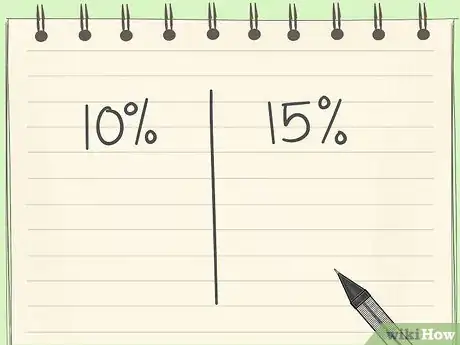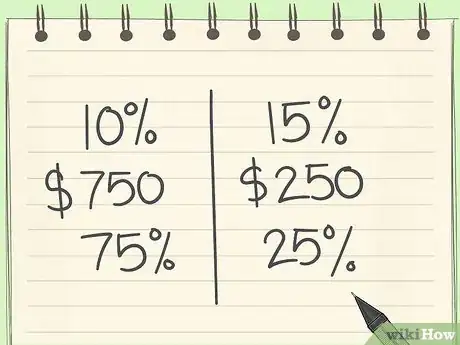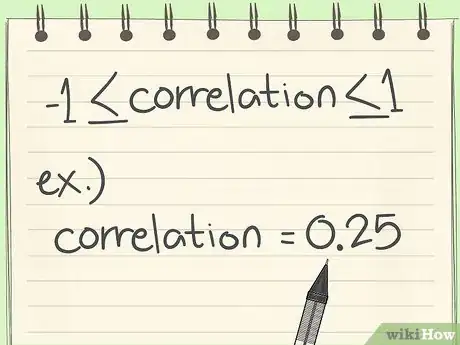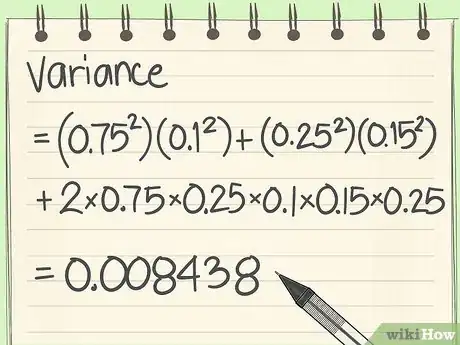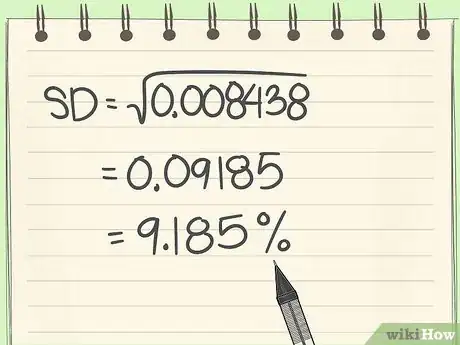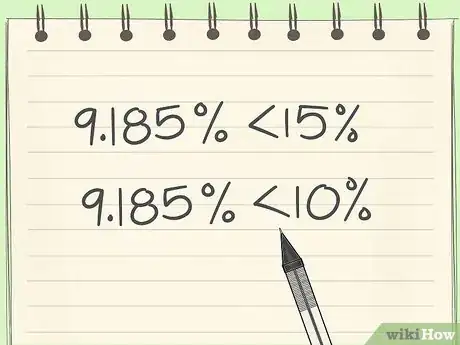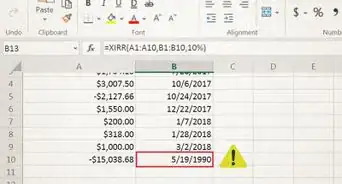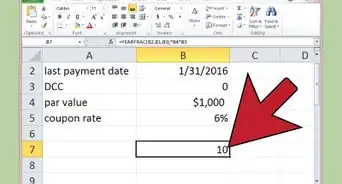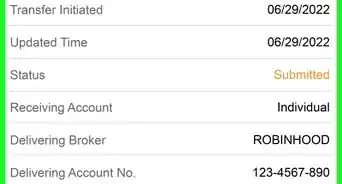X
wikiHow is a “wiki,” similar to Wikipedia, which means that many of our articles are co-written by multiple authors. To create this article, volunteer authors worked to edit and improve it over time.
This article has been viewed 117,965 times.
Learn more...
The standard deviation of a portfolio represents the variability of the returns of a portfolio.[1] To calculate it, you need some information about your portfolio as a whole, and each security within it.
Steps
-
1Calculate the standard deviation of each security in the portfolio. First we need to calculate the standard deviation of each security in the portfolio. You can use a calculator or the Excel function to calculate that.[2]
- Let's say there are 2 securities in the portfolio whose standard deviations are 10% and 15%.
-
2Determine the weights of securities in the portfolio. We need to know the weights of each security in the portfolio.
- Let's say we've invested $1000 in our portfolio of which $750 is in security 1 and $250 is in security 2.
- So the weight of security 1 in portfolio is 75% (750/1000) and the weight of security 2 in portfolio is 25% (250/1000).
Advertisement -
3Find the correlation between two securities. Correlation can be defined as the statistical measure of how two securities move with respect to each other.[3]
- Its value lies between -1 and 1.
- -1 implies that the two securities move exactly opposite to each other and 1 implies that they move in exactly the same way in same direction.
- 0 implies that there is no relation as of how the securities move with respect to each other.
- For our example, let's take correlation as 0.25 which means that if one security increases by $1, the other increases by $0.25.
-
4Calculate the variance. Variance is the square of standard deviation.[4]
- For this example, variance would be calculated as (0.75^2)*(0.1^2) + (0.25^2)*(0.15^2) + 2*0.75*0.25*0.1*0.15*0.25 = 0.008438.
-
5Calculate standard deviation. Standard deviation would be square root of variance.[5]
- So, it would be equal to 0.008438^0.5 = 0.09185 = 9.185%.
-
6Interpret the standard deviation. As we can see that standard deviation is equal to 9.185% which is less than the 10% and 15% of the securities, it is because of the correlation factor:
- If correlation equals 1, standard deviation would have been 11.25%.
- If correlation equals 0, standard deviation would have been 8.38%.
- If correlation equals -1, standard deviation would have been 3.75%.
Advertisement
Community Q&A
-
QuestionHow and why would I diversify a portfolio?
 DonaganTop AnswererDiversify by investing in many different kinds of assets at the same time: stocks, bonds, and commodities, as well as mutual funds and exchange-traded funds that invest in those assets. Do this because these various assets will appreciate in value at different rates, thus protecting you by offsetting temporary losses in one asset class with simultaneous gains in another.
DonaganTop AnswererDiversify by investing in many different kinds of assets at the same time: stocks, bonds, and commodities, as well as mutual funds and exchange-traded funds that invest in those assets. Do this because these various assets will appreciate in value at different rates, thus protecting you by offsetting temporary losses in one asset class with simultaneous gains in another. -
QuestionWhy is a standard deviation of portfolio important?
 DonaganTop AnswererIt is important to people who are interested in stability of income. It allows comparison of the stability of one investment to that of another.
DonaganTop AnswererIt is important to people who are interested in stability of income. It allows comparison of the stability of one investment to that of another. -
QuestionWhich portfolio(s) is/are good to create?
 DonaganTop AnswererThat depends on your goals and your tolerance for risk. If your desire for capital appreciation outweighs your fear of losing any money, you'll accumulate an aggressive portfolio of "growth" stocks. If you're more interested in safety than impressive gains, you'll buy blue-chip stocks and index funds. Discuss this with a fee-only advisor.
DonaganTop AnswererThat depends on your goals and your tolerance for risk. If your desire for capital appreciation outweighs your fear of losing any money, you'll accumulate an aggressive portfolio of "growth" stocks. If you're more interested in safety than impressive gains, you'll buy blue-chip stocks and index funds. Discuss this with a fee-only advisor.
Advertisement
References
- ↑ https://www.investopedia.com/terms/s/standarddeviation.asp
- ↑ https://www.wallstreetmojo.com/portfolio-standard-deviation/
- ↑ https://slickbucks.com/articles/portfolio-standard-deviation/#tab-con-10
- ↑ https://www.investopedia.com/ask/answers/071515/how-can-i-measure-portfolio-variance.asp
- ↑ https://www.investopedia.com/terms/p/portfolio-variance.asp
About This Article
Advertisement
